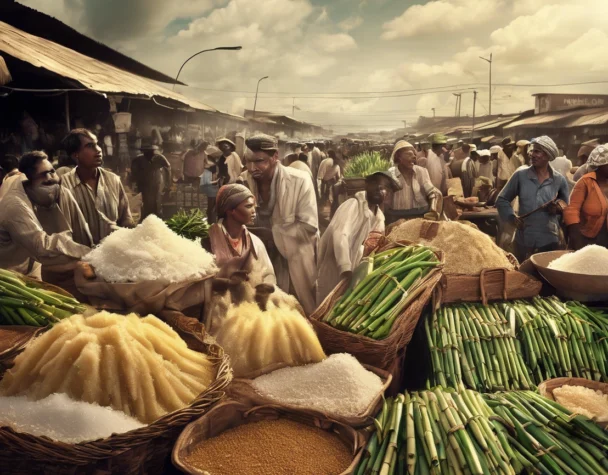
Sugar Prices Surge Amidst Economic Shake-Up
Thu, March 06, 2025In a surprising twist to the ongoing global economic shifts, sugar prices have soared to unprecedented levels. As markets worldwide grapple with fluctuations in supply and demand dynamics, alongside broader economic pressures, this staple commodity has seen a sharp rise in cost. This surge not only impacts consumers at the grocery store but also reverberates through the food industry, affecting everything from candy production to soft drinks.
Sugar Prices Hit Record Highs in Global Markets
In recent months, sugar prices have escalated dramatically, reaching their highest points in several decades. Analysts point to a confluence of factors contributing to this spike, including adverse weather conditions in major sugar-producing countries like Brazil and India, which have significantly hampered crop yields. The disruption has led to a tight supply in global markets, pushing prices upward as importers scramble to secure adequate stocks. Additionally, energy prices have influenced sugar markets, given that sugarcane is a primary source for biofuels in countries such as Brazil, linking sugar prices directly to oil market fluctuations.
Market experts also highlight the role of currency fluctuations in exacerbating the situation. As the dollar strengthens, many sugar-exporting countries, which rely on softer local currencies, find themselves receiving more value from exports. This has encouraged some producers to hold off selling their commodity in anticipation of higher profits, further straining the already limited supply. Trading volumes on major commodity exchanges have seen unusual spikes, indicating a rush among traders to capitalize on the soaring prices, adding yet another layer of complexity to the sugar market dynamics.
Moreover, the COVID-19 pandemic has had a lingering impact on the sugar industry, disrupting supply chains and labor markets. Lockdowns and restrictions have intermittently slowed down the production and shipping of sugar, causing delays and inefficiencies that have trickled down to increase prices. This combination of disrupted supply chains, reduced labor force, and heightened logistical costs has created a perfect storm, pushing sugar prices to their current highs.
Economic Turbulence Fuels Sweet Commodity Surge
The sudden surge in sugar prices can also be seen as a manifestation of broader economic turbulence. Inflationary pressures are mounting globally as economies recover from the effects of the pandemic, with central banks around the world beginning to adjust monetary policies in response. This inflation is not only affecting the sugar industry but is a common thread across various sectors, indicating a more systemic shift in the global economic landscape.
Investors are increasingly viewing commodities like sugar as hedge bets against inflation. As traditional investments become riskier in a volatile economic climate, commodities that have intrinsic value, such as agricultural products, become more attractive. This shift in investment strategy has contributed to increased demand for sugar, further fueling price increases as investors look to commodities to safeguard value.
Furthermore, geopolitical tensions and trade disputes have played their part in this economic shake-up. Import restrictions, tariffs, and sanctions have distorted the usual trade routes for sugar. Countries traditionally dependent on imports are finding it harder to secure stable, cost-effective supplies, prompting them to enter the global market more aggressively. This increased competition for available sugar stocks is another critical factor driving up prices, making the commodity a focal point in global trade discussions.
The unprecedented rise in sugar prices is more than a temporary market anomaly; it reflects deeper economic and geopolitical currents reshaping the fundamentals of global trade and commodity markets. As the world navigates through these turbulent economic times, the sweet commodity of sugar finds itself at the intersection of multiple global challenges. Looking ahead, the situation presents a complex scenario for policymakers, traders, and consumers alike, who must adapt to a new reality where such fluctuations may become more commonplace.

